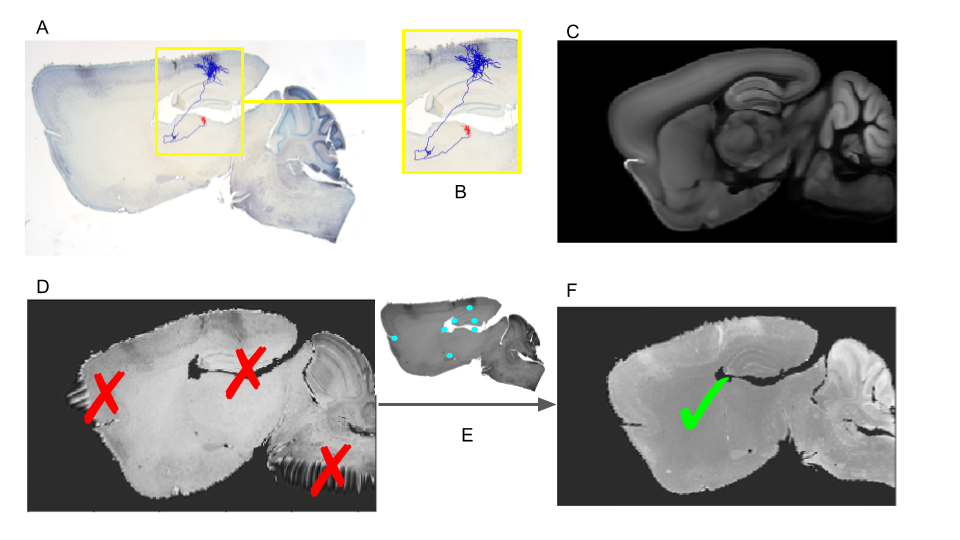Problem statement
Measurements of long-range synaptic connections often lack cellular resolution, needed to adequately model the computations carried out by the brain. One way to improve this is to label and reconstruct individual neurons. The key challenge then is to place these neurons in a brain atlas, with correct positioning of dendritic/axonal arbors with respect to cortical layers/subcortical nuclei.
Corresponding points registration pipeline
One solution is to have expert annotators place digital markers in both the atlas and the 3d-reconstructed neuron, and compute the optimal rigid or affine transformation. This is implemented in a pipeline based on the HBP Morphology Viewer (https://neuroinformatics.nl/HBP/morphology-viewer-dev/) and SBA Composer (https://sba-dev.incf.org/composer/?template=ABA_v3).
Semi-automated registratio (WIP)
The procedure mentioned above has the drawback that (1) expert annotators are needed, and (2) independent observers cannot verify the registration. We work on an alternative approach that includes both the 3d-reconstructed neuron and low-magnification tissue images. This creates a special optimization problem: the stack of images needs to be registered to a 3d atlas, and thereby the neuron should retain its shape. As a start, we manually identified for each section the corresponding atlas slice and then applied the tool Elastix for 2d to 2d non-rigid registration. Due to large deformations, the result was suboptimal, but after manually inserting landmarks we obtained adequate registration. Further work is necessary to reduce the dependence on manual annotation and slice selection.

Figure: A) Experimental sagittal section with the manually co-registered reconstructed neuron (in blue and red); B) Zoomed-in reconstructed neuron; C) Atlas section best fitting experimental section in A); D) Result of co-registration of experimental section in A) into atlas section in C) using Elastix with default parameters. Red crossed overlap regions where the algorithm fails; E) Manually selected landmarks shown as cian dots on the experimental section; F) Improved co-registration result using Elastix and landmarks.